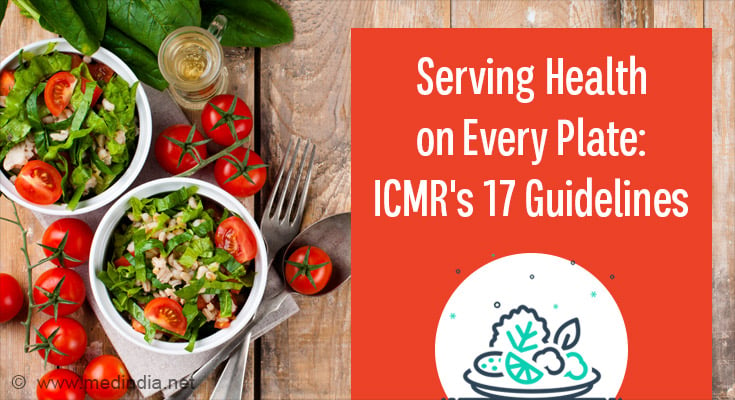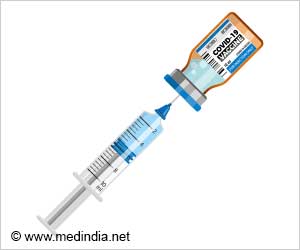- Comprehensive dietary guidelines aim to mitigate the prevalence of NCDs
- Shift towards healthier eating habits backed by scientific research
- Collaboration between ICMR and NIN signals commitment to public health
The Indian Council of Medical Research (ICMR) recently unveiled a comprehensive set of 17 dietary guidelines aimed at addressing the escalating health crisis stemming from unhealthy diets. With a staggering 56.4% of India’s disease burden attributed to poor dietary choices, these guidelines are pivotal in reshaping nutritional habits to mitigate the prevalence of non-communicable diseases (NCDs) such as obesity, diabetes, and cardiovascular ailments. Backed by scientific research and expert recommendations, these guidelines offer a roadmap towards fostering healthier lifestyles and enhancing overall well-being (1✔ ✔Trusted Source
Dietary Guidelines for Indians
).
Advertisement
Understanding the Dietary Landscape in India
India’s dietary landscape has undergone substantial changes, leading to a dual burden of malnutrition and non-communicable diseases (NCDs). While undernutrition remains a persistent challenge, the country is grappling with a rise in NCDs, fueled in part by shifts in dietary habits and lifestyle choices.
Over the years, traditional diets characterized by locally sourced, seasonal foods have given way to diets increasingly reliant on processed and convenience foods. The proliferation of fast food chains, ready-to-eat meals, and sugary beverages has become more prevalent, especially in urban areas. This shift is often accompanied by a decrease in the consumption of nutrient-rich whole foods such as fruits, vegetables, and whole grains.
Impact of Sedentary Lifestyles:
Coupled with changes in dietary patterns, sedentary lifestyles have become the norm for many Indians, particularly in urban settings. Modern conveniences, technological advancements, and desk-bound jobs have contributed to reduced physical activity levels. This sedentary behavior exacerbates the health risks associated with poor dietary choices, leading to a higher incidence of obesity, diabetes, and cardiovascular diseases.
Contributing Factors to Unhealthy Diets:
Several factors contribute to the prevalence of unhealthy diets in India. Urbanization and economic development have led to increased accessibility and affordability of processed foods, which are often high in sugars, unhealthy fats, and sodium. Additionally, changing work dynamics and hectic lifestyles have made convenience foods more appealing to time-strapped individuals and families.
Advertisement
Role of ICMR and NIN
Recognizing the urgent need to address the burgeoning health crisis, the Indian Council of Medical Research (ICMR), in collaboration with the National Institute of Nutrition (NIN), has taken proactive steps to formulate evidence-based dietary guidelines. These guidelines aim to combat the adverse effects of poor nutrition and lifestyle choices by promoting healthier eating habits and emphasizing the importance of balanced diets.
While the prevalence of unhealthy diets poses significant challenges to public health, there are also opportunities for intervention and improvement. Education and awareness campaigns can empower individuals to make healthier food choices and adopt active lifestyles. Moreover, initiatives aimed at promoting sustainable agriculture and local food systems can enhance access to nutritious foods, especially in undeserved communities.
Advertisement
Dietary Guidelines by ICMR
- Eat a variety of foods to ensure a balanced diet
- Ensure provision of extra food and healthcare during pregnancy and lactation
- Ensure exclusive breastfeeding for the first six months and continue breastfeeding till two years and beyond
- Start feeding homemade semi-solid complementary foods to the infant soon after six months of age
- Ensure adequate and appropriate diets for children and adolescents both in health and sickness
- Eat plenty of vegetables and legumes
- Use oils/fats in moderation; choose a variety of oil seeds, nuts, nutri-cereals, and legumes to meet daily needs of fats and essential fatty acids (EFA)
- Obtain good quality proteins and essential amino acids (EAA) through appropriate combination foods; avoid protein supplements to build muscle mass
- Adopt a healthy lifestyle to prevent abdominal obesity, overweight, and overall obesity
- Be physically active and exercise regularly to maintain good health
- Restrict salt intake
- Consume safe and clean foods
- Adopt appropriate pre-cooking and cooking methods
- Drink an adequate quantity of water
- Minimize the consumption of high fat, sugar, salt (HFSS), and ultra-processed foods (UPFs)
- Include nutrient-rich foods in the diets of the elderly for health and wellness
- Read information on food labels to make informed and healthy food choices
In summary, the release of these dietary guidelines marks a significant milestone in India’s public health agenda, signaling a concerted effort towards addressing the pervasive issue of unhealthy diets and its associated health ramifications. By prioritizing nutrition education, promoting dietary diversity, and advocating for lifestyle modifications, these guidelines pave the way for a healthier and more resilient population. However, their effective implementation hinges on collaborative efforts from policymakers, healthcare professionals, and the community at large. Through sustained commitment and collective action, India can aspire to build a future where nutritious diets are accessible, affordable, and integral to every individual’s well-being.
Reference:
- Dietary Guidelines for Indians – (https://main.icmr.nic.in/sites/default/files/upload_documents/DGI_07th_May_2024_fin.pdf)
Source-Medindia



